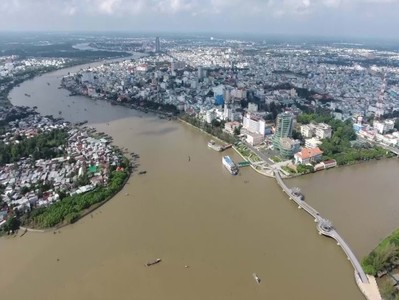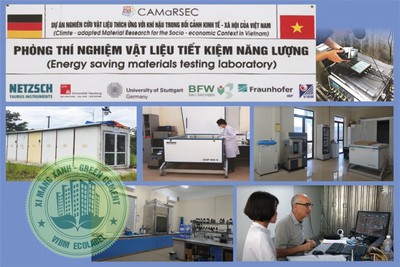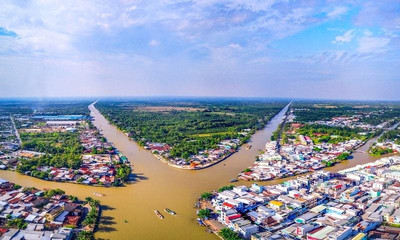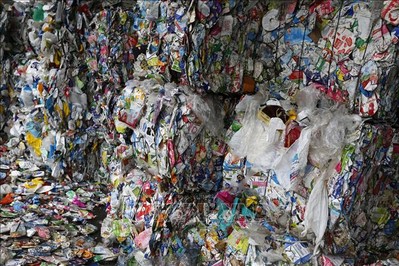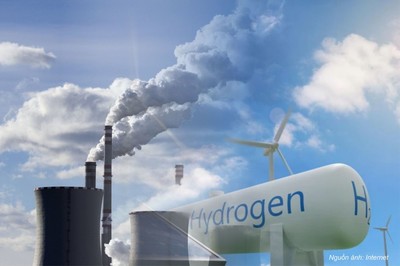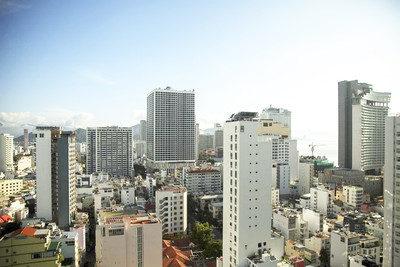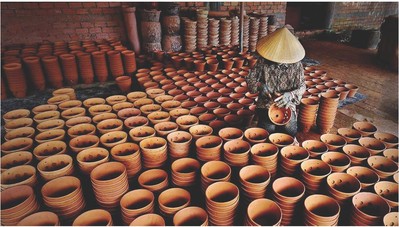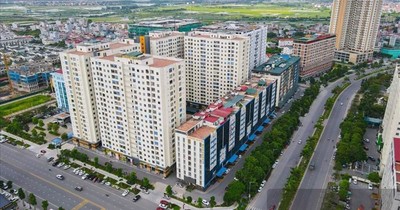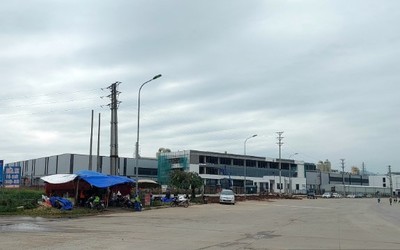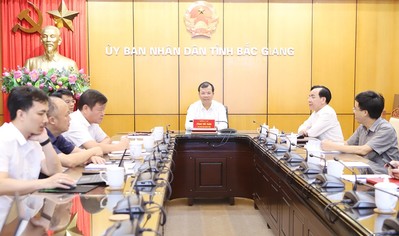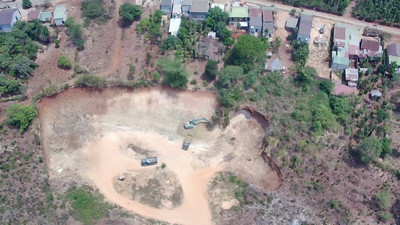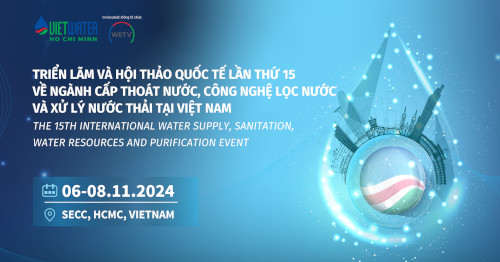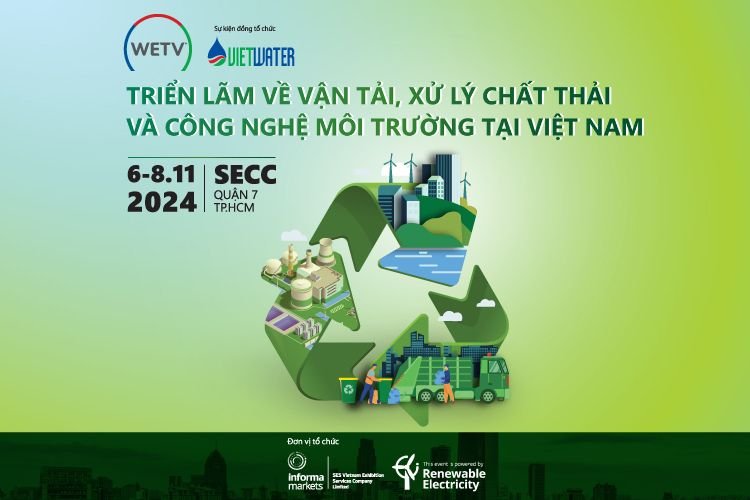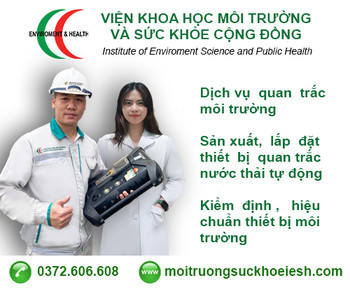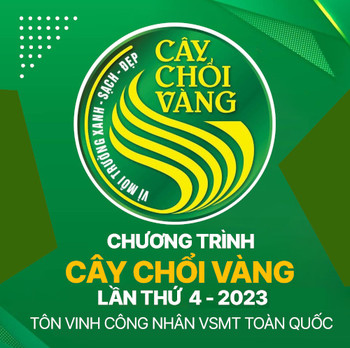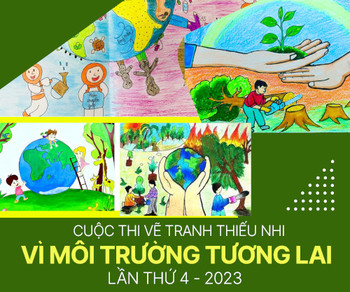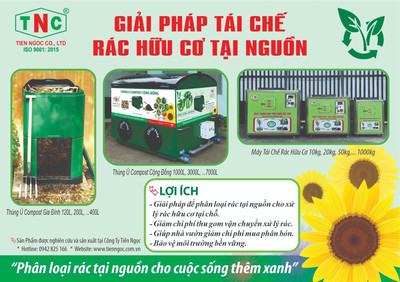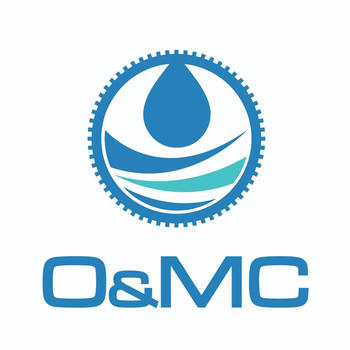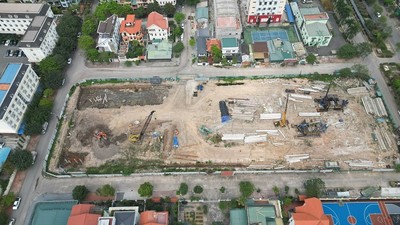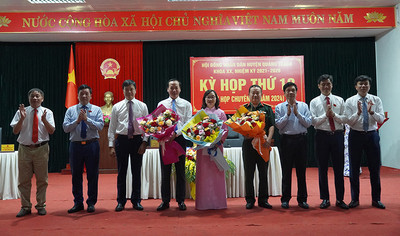Công bố quốc tế lĩnh vực môi trường số 01-2024
Trân trọng giới thiệu tới quý độc giả Công bố quốc tế lĩnh vực môi trường số 01-2024.
Về quản lý môi trường
- 10 loại rác thải hàng đầu dưới đáy biển ở các vùng biển châu Âu từ 2012 đến 2020.
- Liệu các cam kết giảm phát thải có bảo vệ được phần bù rủi ro carbon?
- Lưu trữ carbon của hệ sinh thái xem xét những thay đổi kết hợp về môi trường và sử dụng đất trong tương lai và con đường hướng tới trung hòa carbon ở các khu vực phát triển.
- Xem xét lại mối quan hệ giữa tăng trưởng kinh tế và phát thải khí nhà kính ở Ấn Độ: Bằng chứng từ điều kiện cần và đủ.
- Tác động trái ngược của các hoạt động làm sạch không khí đối với nồng độ ozone bề mặt ở các khu vực khác nhau ở Bắc Kinh từ tháng 5 đến tháng 9 năm 2013–2020.
- Đại dịch Covid-19 đã góp phần như thế nào vào những thay đổi về biến đổi khí hậu và mối quan tâm về môi trường, hành vi tiết kiệm tài nguyên và phân loại rác thải.
- Mở rộng sông ở vùng núi và chân đồi trong lũ lụt: Thông tin chi tiết từ phân tích tổng hợp về 51 con sông ở Châu Âu.
- Nghiên cứu khả thi lưu trữ CO2 trong đại dương thông qua đánh giá tác động môi trường biển.
- Công nghiệp 4.0 hướng tới sự bền vững về xã hội và môi trường trong các công ty đa quốc gia: Kích hoạt nền kinh tế tuần hoàn, thực tiễn xã hội của tổ chức và mục đích của doanh nghiệp.
Về môi trường đô thị
- Mô phỏng sự phân tán theo chiều dọc và tác động ô nhiễm của ánh sáng nhân tạo vào ban đêm trong môi trường đô thị.
- Đánh giá tác động của việc cải tạo nước đối với dấu chân nước xanh và xám trong nhà máy xử lý nước thải đô thị.
- Tác động phi tuyến động của quá trình đô thị hóa đến việc xả nước thải dựa trên đặc tính quán tính của việc xả nước thải.
- Đồng hóa, cô lập và lưu trữ CO2 của các loài cây gỗ đô thị mọc trong công viên và dọc đường phố ở hai vùng khí hậu.
- Vai trò của khung hữu cơ kim loại trong việc loại bỏ các chất ô nhiễm mới nổi trong nước thải.
- Ảnh hưởng của vi môi trường nước rỉ rác đến sự xuất hiện của este phthalate trong bãi chôn lấp.
- Tác động nhiệt của bãi đỗ xe ngầm đến nước ngầm đô thị.
- Quá trình hóa rắn kim loại nặng trong quá trình đốt chất thải rắn đô thị rửa tro bay bằng hỗn hợp nhựa đường.
- Dấu hiệu phân tử và quang học của quá trình biến đổi quang hóa của chất hữu cơ hòa tan: Vai trò không thể bỏ qua của chất dạng hạt lơ lửng trong sông đô thị.
- Phản ứng của hệ thống loại bỏ phốt pho khử nitrat (AAO-BCO) mới đối với sự nhiễu loạn dòng chảy hình sin của nước thải đô thị: Khả năng thích ứng, khả năng chịu đựng và cải tiến.
Về môi trường khu công nghiệp
- Đánh giá và phân loại mức tiêu thụ nước trong các tòa nhà công nghiệp - Nghiên cứu trường hợp của Continental Advanced Antenna, Vila Real, Bồ Đào Nha.
- Cấu trúc cộng đồng vi sinh vật và dự đoán chức năng trong năm nhà máy xử lý nước thải khu công nghiệp quy mô lớn.
- Tối ưu hóa đa mục tiêu hệ thống năng lượng khí-hơi nước cho một nhà máy sắt thép tích hợp có tính đến việc giảm chi phí và lượng khí thải carbon.
- Cạnh tranh của chính quyền địa phương, sự tích tụ của ngành năng lượng mới và hiệu quả năng lượng tổng thể của yếu tố sinh thái đô thị: Một góc nhìn mới từ vai trò của kiến thức.
- Tự nhiên có tốt hơn không? Nghiên cứu độc tính sinh thái của thuốc nhuộm anthraquinone.
- Phương pháp chuyển đổi kỹ thuật số dựa trên dữ liệu để tối ưu hóa hậu cần ngược trong hệ thống quản lý chất thải y tế.
- Đánh giá sự biến đổi sinh thái thực vật và khả năng tích lũy kim loại nặng ở các loài thực vật mọc tự nhiên ở khu mỏ bauxite Pakhar, Jharkhand, Ấn Độ.
- Ô nhiễm không khí công nghiệp và trẻ sinh nhẹ cân ở New Mexico, Mỹ.
- Vi nhựa trong nuôi trồng thủy sản công nghiệp: Xuất hiện trong môi trường nước, thức ăn và sinh vật (Dicentrarchus labrax).
- Xử lý nâng cao và thu hồi tài nguyên nước thải nhà máy bia bằng cách đồng nuôi cấy vi tảo dạng sợi Tribonema aequale và vi khuẩn tự thân.
Theo các nhà khoa học trong nước, một chiếc túi nilon, nhiều khi được sử dụng trong 5 phút, chỉ mất 5 giây để sản xuất và cần 1 giây để vứt bỏ, song để phân hủy thì cần từ 500-1.000 năm.
CHUYÊN TRANG QUẢN LÝ MÔI TRƯỜNG
Tạp chí Môi trường và Đô thị Việt Nam
Xin trân trọng giới thiệu!
The Environmental Management Special Section is pleased to present to our valued readers the International Environmental Bulletin No. 01/2024, featuring the following key topics:
ENVIRONMENTAL MANAGEMENT / QUẢN LÝ MÔI TRƯỜNG
1. Top 10 marine litter items on the seafloor in European seas from 2012 to 2020
Science of The Total Environment, Volume 902, 1 December 2023, 165997
Abstract
We studied the ten most frequently encountered litter items from the seafloor in European seas to advance actions and inform future mitigation measures to reduce marine litter and the associated social, economic and environmental impacts it has on European seas and beyond. Data were collected during trawl surveys from 2012 to 2020 as part of national and regional marine litter monitoring programmes in the Greater North Sea (5652 trawls), Celtic Seas (3505), Bay of Biscay (651), and Baltic Sea (3688). A Bayesian approach is used to quantify the variation in the item rankings. Overall, plastic items predominate in the top positions in each area. Synthetic rope, plastic sheets, monofilament fishing line and plastic bags occupy four of the top five positions for each of the Greater North Sea, Celtic Seas and the Bay of Biscay. Items from fishing and rope (representing mainly other maritime activities) are strongly represented in the top ten lists from three of our four areas, with synthetic rope, fishing nets, and tangled and untangled monofilament fishing line listed in the top seven positions for the Greater North Sea, Celtic Seas and the Bay of Biscay. The top ten items in the Baltic Sea are of a different profile to the other regions, but the most commonly caught items are still predominantly plastic, with plastic sheets, other plastic items and plastic bags occupying three of the top four positions.
The findings in this study highlight the need to address sea-based sources to try and eliminate litter from fishing and maritime activities. Measures such as improved port reception facilities, marking of fishing gear, promoting reporting of the loss of fishing gear and increasing public awareness should be introduced.
2. Will emission reduction commitments hedge the carbon risk premium?
Journal of Cleaner Production, Volume 430, 10 December 2023, 139747
Abstract
Under the goal of "carbon peaking” and "carbon neutrality” in China, it is significant to explore whether emission reduction commitments contribute to carbon risk premium. Therefore, based on a sample of Chinese listed companies that publicly disclosed questionnaires in the CDP from 2009 to 2021, this paper empirically examines the relationship between emission reduction commitments and carbon risk premium and their formation mechanism. The results show that emission reduction commitments can effectively hedge the carbon risk premium, which pass several robustness tests. Specifically, the more comprehensive and ambitious the commitment is, the greater the suppression of the carbon risk premium.
The mechanism test shows that disclosing emission reduction commitment information can reduce carbon risk by improving investor confidence and attracting political resources. Differences in enterprise emission levels, regional environmental regulation intensity and green financial development result in different risk-hedging effects of emission reduction commitments. Moreover, the greater the substantial pressure from stakeholders, the greater the tendency for firms to set up emission reduction commitments.
Finally, the heterogeneity analysis reveals that confidence level of commitments has a significant impact on risk premium. Specifically, enterprises with SBTi validation, higher CDP ratings and higher target completion are more helpful in curbing carbon risk premium. Our findings contribute to corporate commitment to climate change and complement the carbon risk premium hypothesis.
3. Ecosystem carbon storage considering combined environmental and land-use changes in the future and pathways to carbon neutrality in developed regions
Science of The Total Environment, Volume 903, 10 December 2023, 166204
Abstract
Assessing the carbon storage capacity of terrestrial ecosystems is crucial for land management and carbon reduction policymaking. There is still a knowledge gap regarding how ecosystem carbon storage will be impacted by combined environmental and land-use factors and their spatial-temporal changes, especially in developed regions where urbanization has slowed down.
This study investigated how developed regions in subtropical and tropical areas might increase carbon storage and achieve carbon neutrality, using Guangdong Province in South China as an example. Based on the sustainable development assumption, three land-management scenarios were developed and simulated for 2020–2060 using the Patch-generating Land Use Simulation model. Without considering disturbance and natural losses, carbon storage was estimated by net ecosystem productivity (NEP)—the difference between net primary productivity (NPP) and heterotrophic respiration (HR). NPP was predicted using an artificial neural network model trained by historical NPP data and 16 environmental and land-use variables.
HR was predicted using soil respiration models from previous research. Based on the balance between carbon storage and emissions, we predicted the allowable fossil fuel consumption to achieve net-zero CO2 emissions in 2060. The results show that Guangdong's total carbon storage changes from 73.7 MtC in 2020 to 70.6–74.8 MtC in 2060 under different scenarios. Nonlinear relationships exist between the carbon stored and the areas of different land-use types. Topography, temperatures, and land-use configurations jointly lead to significantly varied carbon storage between croplands and between forests in space and time. Protecting and regenerating forests in subtropical areas and forest edges is more effective than afforestation in lowland tropical areas for storing carbon. Net-zero CO2 emissions rely more on reducing emissions than land management. To achieve this, the proportion of fossil energy in total energy consumption should be lowered from 75.5 % in 2020 to ~25 % in 2060.
4. Revisiting the nexus between economic growth and disaggregated greenhouse gases in India: Evidence from necessary and sufficient conditions
Journal of Cleaner Production, Volume 430, 10 December 2023, 139514
Abstract
For India, achieving environmental sustainability in the midst of faster growth remains a challenging objective. Therefore, we are revisiting the nature of the Environmental Kuznets Curve (EKC) at different stages of economic growth through both necessary and sufficient conditions under the cubic model specifications in India. Further, we extend the EKC framework by incorporating energy consumption, agricultural value added, trade, the world uncertainty index, and geopolitical risk as additional variables into the three preferred disaggregated greenhouse gas emission (GHG) models. This study employs an auto-regressive distributed lag model (ARDL).
The empirical findings show evidence of the valid N-shaped EKC through both necessary and sufficient conditions for carbon dioxide (CO2) and nitrous oxide (N2O) and exhibit the presence of two real and distinct income turning points for both valid EKCs. In contrast, only the necessary condition supports the N-shaped EKC for methane (CH4) emissions in India. Further, the results highlight that trade has a positive impact, whereas the world uncertainty index has a negative impact on disaggregated GHGs. Similarly, geopolitical risk has a negative effect on CH4 and N2O, whereas energy consumption has a positive impact on CO2 emissions. Moreover, agricultural value added has a negative effect on CH4 and a positive effect on N2O emissions. Our empirical findings suggest policy recommendations that can collectively work as a roadmap for India to become emission-neutral by 2070.
5. Contrasting effects of clean air actions on surface ozone concentrations in different regions over Beijing from May to September 2013–2020
Science of The Total Environment, Volume 903, 10 December 2023, 166182
Abstract
Due to the nonlinear impacts of meteorology and precursors, the response of ozone (O3) trends to emission changes is very complex over different regions in megacity Beijing. Based on long-term in-situ observations at 35 air quality sites (four categories, i.e., urban, traffic, northern suburban and southern suburban sites) and satellite data, spatiotemporal variability of O3, gaseous precursors, and O3-VOCs-NOx sensitivity were explored through multiple metrics during the warm season from 2013 to 2020. Additionally, the contribution of meteorology and emissions to O3 was separated by a machine-learning-based de-weathered method.
The annual averaged MDA8 O3 and O3 increased by 3.7 and 2.9 μg/m3/yr, respectively, with the highest at traffic sites and the lowest in northern suburb, and the rate of Ox (O3 + NO2) was 0.2 μg/m3/yr with the highest in southern suburb, although NO2 declined strongly and HCHO decreased slightly. However, the increment of O3 and Ox in the daytime exhibited decreasing trends to some extent. Additionally, NOx abatements weakened O3 loss through less NO titration, which drove narrowing differences in urban-suburban O3 and Ox.
Due to larger decrease of NO2 in urban region and HCHO in northern suburb, the extent of VOCs-limited regime fluctuated over Beijing and northern suburb gradually shifted to transition or NOx-limited regime. Compared with the directly observed trends, the increasing rate of de-weathered O3 was lower, which was attributed to favorable meteorological conditions for O3 generation after 2017, especially in June (the most polluted month); whereas the de-weathered Ox declined except in southern suburb. Overall, clean air actions were effective in reducing the atmospheric oxidation capacity in urban and northern suburban regions, weakening local photochemical production over Beijing and suppressing O3 deterioration in northern suburb. Strengthening VOCs control and keeping NOx abatement, especially in June, will be vital to reverse O3 increase trend in Beijing.
6. How the Covid-19 pandemic contributed to changes in climate change and environmental concern, resource-saving and waste-sorting behaviour
Journal of Cleaner Production, Volume 430, 10 December 2023, 139759
Abstract
The Covid-19 pandemic has changed not only attitudes and habits related to health care but also encompassed all other spheres even those related to environmental attitudes and pro-environmental behaviour. All the people spending the majority of their time at home had additional opportunities to change their habits, particularly those related to environmental aspects. Thus, the aim of this paper was to examine the Covid-19 contribution to the changes in the environmental, climate change and pandemic concerns during the period of the second wave and the slowdown of the Covid-19 pandemic before the other crises such as the energy crisis and inflation began.
Furthermore, in this paper, the changes in resource-saving and waste-sorting behaviour and its determinants were analysed. The results revealed that during the pandemic the environmental and climate change concern increased significantly, and people also declared that the pandemic has encouraged them to sort waste and save natural resources more. Meanwhile, the concern about the Covid-19 pandemic decreased due to successful vaccination, other management tools for this illness and the emerging of another crisis. After analysing the main factors of changes in resource-saving and waste-sorting behaviour, we found that the changes in environmental concern influenced these behaviours the most. Changes in the Covid-19 pandemic concern also statistically significantly encouraged people to change resource-saving and waste-sorting behaviour. The environmental risk during the Covid-19 pandemic, significantly impacted the changes in resource-saving behaviour only. Meanwhile, the changes in climate change concern insignificantly influenced both pro-environmental behaviours. Therefore, this study reveals that the Covid-19 pandemic has taught people not only to care about the environment more but to carry out pro-environmental behaviour as well.
7. River widening in mountain and foothill areas during floods: Insights from a meta-analysis of 51 European Rivers
Science of The Total Environment, Volume 903, 10 December 2023, 166103
Abstract
River widening, defined as a lateral expansion of the channel, is a critical process that maintains fluvial ecosystems and is part of the regular functioning of rivers. However, in areas with high population density, channel widening can cause damage during floods. Therefore, for effective flood risk management it is essential to identify river reaches where abrupt channel widening may occur. Despite numerous efforts to predict channel widening, most studies have been limited to single rivers and single flood events, which may not be representative of other conditions. Moreover, a multi-catchment scale approach that covers various settings and flood magnitudes has been lacking. In this study, we fill this gap by compiling a large database comprising 1564 river reaches in several mountain regions in Europe affected by floods of varying magnitudes in the last six decades.
By applying a meta-analysis, we aimed to identify the types of floods responsible for more extensive widening, the river reach types where intense widening is more likely to occur, and the hydraulic and morphological variables that explain widening and can aid in predicting widening. Our analysis revealed seven groups of reaches with significantly different responses to floods regarding width ratios (i.e., the ratio between channel width after and before a flood). Among these groups, the river reaches located in the Mediterranean region and affected by extreme floods triggered by short and intense precipitation events showed significantly larger widening than other river reaches in other regions. Additionally, the meta-analysis confirmed valley confinement as a critical morphological variable that controls channel widening but showed that it is not the only controlling factor. We proposed new statistical models to identify river reaches prone to widening, estimate potential channel width after a flood, and compute upper bound width ratios. These findings can inform flood hazard evaluations and the design of mitigation measures.
8. Digital technology and carbon emissions: Evidence from China
Journal of Cleaner Production, Volume 430, 10 December 2023, 139765
Abstract
The support of digital technology is urgently needed to promote low-carbon development and green economic and social transformation and to realize the goal of "carbon neutrality” early. This paper utilizes the "Golden Tax III” project for the digital transformation of China's tax collection and administration and empirically confirms that digital tax collection and administration significantly reduces carbon emissions based on the panel data of 30 provinces (municipalities directly under the central government and autonomous regions) in China from 2010 to 2020, i.e., digital technology plays a positive role in carbon emission reduction.
The mechanism test shows that digital technology indirectly affects carbon emissions through industrial structure, technological innovation, and tax structure. Heterogeneity analysis shows that digital technology has a significant inhibitory effect on carbon emissions in the northern region, non-Yangtze River region, provincial administrative areas with heavy local government debt, and a large proportion of tax revenue from the secondary industry and tax revenue from state-owned enterprises. Under the requirement of high-quality and green development of the economy, this paper is of great theoretical and practical significance for using digital technology to ensure the governance functions of tax, help low-carbon development, and reach the goal of "carbon neutrality” at an early date.
9. Feasibility study of storing CO2 in the ocean by marine environmental impact assessment
Science of The Total Environment, Volume 903, 10 December 2023, 166270
Abstract
Since the industrial revolution, which was accompanied with the use of fossil fuels as an energy source, the content of carbon dioxide (CO2) in the atmosphere has increased. To mitigate global warming, industries that utilize fossil fuels have continuously explored new approaches to reduce CO2 emissions and convert it to alternative fuels. The ocean is a vast source of absorbed CO2 on Earth, and various studies have been conducted on the use of the ocean to reduce global CO2. This study focused on reducing CO2 in the atmosphere by storing it as bicarbonate, a form of CO2 that exists in the ocean.
The optimum condition for the conversion of CO2 into bicarbonate was investigated by considering the dissolved inorganic carbon (DIC; HCO3−, CO32−, H2CO3) concentration and pH. To confirm the biological impact of this conversion, biological impact experiments were conducted under various DIC concentrations using Skeletonema japonicum, a phytoplankton present in most areas of the sea. Based on the DIC concentration (2.09 mM) of the seawater, the DIC concentrations used in the Lab-scale experiment ranged from 2.5 mM to 18.75 mM, and the concentration with the highest conversion rate (< 6.38 mM) was applied in the pilot plant.
Marine environmental impact modeling was performed to observe the effect of discharge to the ocean and its movement. The results revealed a slight growth inhibition of phytoplankton at DIC concentrations higher than the base concentration. Nevertheless, the change in the DIC concentration exerted no effect on the phytoplankton growth except at extremely high concentrations. Moreover, the high DIC concentration can be diluted by the ocean current flow rate, thus counterbalancing the growth inhibition effect. The results obtained in this study demonstrate the feasibility of CO2 storage in the form of DIC, and will be helpful for further development of CO2 mitigation.
10. Industry 4.0 towards social and environmental sustainability in multinationals: Enabling circular economy, organizational social practices, and corporate purpose
Journal of Cleaner Production, Volume 430, 10 December 2023, 139712
Abstract
The advent of Industry 4.0 (I4.0) technologies has ushered in a transformative era for multinational enterprises (MNEs), propelling them toward a future characterized by social and environmental sustainability. In this introductory piece for our special issue, we explore the intersection of I4.0, circular economy principles, organizational social practices, and corporate purpose within MNEs. By amalgamating these concepts, this research delves into the synergistic potential of I4.0 technologies to drive the transition towards sustainable business models. It also explores the pivotal role of organizational social practices in shaping ethical dimensions and fostering corporate cultures that prioritize social responsibility, employee wellbeing, and stakeholder engagement.
The findings of this study have implications for academia, policy, and industry. Scholars will gain a nuanced understanding of the multifaceted dynamics shaping sustainable practices in the context of I4.0, while practitioners and policy-makers receive actionable insights for fostering socially responsible and environmentally conscious strategies within MNEs. As the global community grapples with pressing social and environmental challenges, this research serves as a beacon, guiding multinationals toward a future where technological innovation converges with social and environmental stewardship, thereby catalyzing a paradigm shift toward a more sustainable and equitable world.
11. Occurrence of microplastic pollution in rivers globally: Driving factors of distribution and ecological risk assessment
Science of The Total Environment, Volume 904, 15 December 2023, 165979
Abstract
Microplastics, as global emerging pollutants, have received significant attention worldwide due to their ubiquitous presence in the rivers. However, there is still a lack of clarity on the occurrence, driving factors, and ecological risks of microplastics in rivers worldwide. In this study, a global microplastic dataset based on 862 water samples and 445 sediment samples obtained from 63 articles was constructed, which revealed the temporal and spatial distribution of abundance and morphological characteristics of microplastics in rivers across the globe. In global rivers, the abundance of MPs in both water and sediment spans across 10 and 4 orders of magnitude, respectively.
The MP comprehensive diversity index based on the physical morphological characteristics of MPs indicated a significant positive correlation between the pollution sources of MPs in different environmental media. Based on the data was aligned to the full-scale MPs, a novel framework was provided to evaluate the ecological risk of MPs and the interaction effects between the influencing factors driving the distribution characteristics of MPs in rivers around the world.
The results obtained demonstrated a wide variation in the key driving factors affecting the distribution of microplastics in different environmental media (water and sediment) in rivers globally. The diversity indices of the morphological characteristics of MPs in densely populated areas of lower-middle income countries in Asia were significantly higher, implying that the sources of microplastics in these regions are more complex and extensive. More than half of the rivers are exposed to potential ecological risks of MPs; however, microplastics may pose only immediate risks to aquatic species in Burigang River, Bangladesh. This can provide valuable insights for formulating more effective scientific strategies for the management of MP pollution in rivers.
12. A holistic analysis of China's consumption-based water footprint (2012–2017) from a multilevel perspective
Journal of Cleaner Production, Volume 429, 1 December 2023, 139593
Abstract
As the world's second-largest economy, rapid socioeconomic development in China has exerted unprecedented pressure on water resources. However, there is still uncertainty regarding consumption-based water footprint (CWF) assessment across different spatiotemporal scales, especially those differentiated by green, blue, and grey water footprints. To address this knowledge gap, this study employed a multi-regional input–output (MRIO) model and structural decomposition analysis (SDA) to quantify the spatiotemporal dynamics and key drivers of consumption-based green (GCWF), blue (BCWF), and grey (HCWF) water footprints in mainland China during 2012–2017. The main findings of the study are as follows. (1) The HCWF is approximately 4.4 times greater than the sum of the GCWF and BCWF, with water consumption caused by pollution significantly exceeding direct consumption. However, there was a significant decrease in all three CWFs after 2015, particularly HCWF. (2) The spatial distribution pattern of the CWF shows high values in the east and south and low values in the west and north, while virtual water (VW) transfer through commodity trade occurs mainly from inland to coastal regions. (3) The three highest water-consuming sectors were agriculture, food and tobacco processing, and construction, accounting for over 70% of the total water consumption. (4) Water efficiency and consumption patterns are crucial factors in reducing CWF, while affluence levels have the greatest impact on increasing CWF, followed by changes in industrial structure after 2015. Overall, the results of this study contribute to a comprehensive understanding of China's regional and sectoral water consumption throughout the supply chain. In addition, our findings identified regions and sectors with high water consumption and their drivers, which can inform policy decisions and contribute to synergistic cross-regional regulation and sustainable water resources management.
13. A review on sterilization methods of environmental decontamination to prevent the coronavirus SARS-CoV-2 (COVID-19 virus): A new challenge towards eco-friendly solutions
Science of The Total Environment, Volume 904, 15 December 2023, 166021
Abstract
In recent years, the COVID-19 pandemic is currently wreaking havoc on the planet. SARS-CoV-2, the Severe Acute Respiratory Syndrome Coronavirus, is the current term for this outbreak. Reports about this novel coronavirus have been presented since the pandemic's breakout, and they have demonstrated that it transmits rapidly from person to person, primarily by droplets in the air. Findings have illustrated that SARS-CoV-2 can survive on surfaces from hours to days.
Therefore, it is essential to find practical solutions to reduce the virus's impact on human health and the environment. This work evaluated common sterilization methods that can decontaminate the environment and items. The goal is that healthcare facilities, disease prevention organizations, and local communities can overcome the new challenge of finding eco-friendly solutions. Further, a foundation of information encompassing various sterilization procedures and highlighting their limits to choose the most appropriate method to stop disease-causing viruses in the new context has been presented. The findings of this crucial investigation contribute to gaining insight into the comprehensive sterilization approaches against the coronavirus for human health protection and sustainable environmental development.
14. Research paradigm for high-precision, large-scale wind energy potential: An example of a geographically-constrained multi-criteria decision analysis model at the km-level in China
Journal of Cleaner Production, Volume 429, 1 December 2023, 139614
Abstract
Wind power plays a pivotal role in China's endeavor to achieve its ambitious emissions reduction targets. However, the current research on wind energy potential lacks standardization, making it arduous to compare wind potential across different regions and match energy supply and demand accurately. To address this issue, this study developed a geographically-constrained multi-criteria decision analysis (GIS-MCDA) model to estimate China's wind energy potential at a resolution of 1 km2. The GIS-MCDA model is reconstructed from a geospatial perspective using 11 finely-grained metric indicators, significantly improving the accuracy of estimates.
Moreover, this study proposes a research paradigm for wind energy potential that can serve as a reference for other countries and regions. The results demonstrate that China possesses a wind energy development potential of 4.6 TW at a height of 100 m, including 4.1 TW of onshore wind power potential and 0.5 TW of offshore potential. The abundant resources can assist China in achieving its zero-carbon emissions goal. However, the abundant wind energy resources in the "Three North" region of China do not match the current electricity demand. Conversely, the southeast coastal region presents significant potential for offshore wind power, heralding a new opportunity for wind power development. By depicting the deployment potential of wind power, this study provides more precise estimates, establishes a research paradigm for wind energy potential, enhances researchers' comprehension of wind energy development, and provides a replicable, scalable, and quantifiable wind energy potential measurement platform for effective planning of renewable energy.
15. Short-term exposure to sulfur dioxide and daily mortality in Brazil: A nationwide time-series study between 2003–2017
Chemosphere, Volume 343, December 2023, 140259
Abstract
Sulfur dioxide (SO2), despite its ubiquitousness, there is relatively less epidemiological evidence regarding the health risks associated with SO2 compared to other pollutants, especially in low-income countries where there are high levels of SO2 emissions. In this study, we estimated the association between ambient SO2 exposure and daily mortality in Brazil over a period of 15 years (2003–2017). We used an extension of the two-stage time-series design in a time-series analytic approach with a distributed lag model. The study population consisted of 2,872,084 death records, with a higher proportion of male deaths observed across all-cause mortality (58%). The majority of the individuals were aged above 65 years.
The mean SO2 concentration across the study period was 1.5 μg/m³ (range: 0.0 to 71.0). The national meta-analysis for the whole dataset (without stratification by sex and age) showed an uncertain association, in which a 10 μg/m3 increase in daily SO2 was associated with an RR of mortality of 1.015 (95%CI: 0.992; 1.037). Robust associations were observed only for the subgroup analysis of people 46–65 years old [RR = 1.050 (95%CI: 1.004; 1.096)] and men 46–65 years old [RR = 1.064 (95%CI: 1.005; 1.122)].
We found moderate heterogeneity in the national analysis, with an I2 of 21% for the subgroup of people 46–65 years old. Excess mortality fraction for people between 46 and 65 years old attributable to per 10 μg/m3 increase in SO2 was 2.93% (95% eCI: 0.29%–6.78%). These results highlight the need for targeted air pollution control policies to reduce the health burden of SO2 exposure in Brazil. Further research is needed to fully understand the mechanisms behind the age-specific and regional effects of SO2 on mortality.
16. The impact of business intelligence, big data analytics capability, and green knowledge management on sustainability performance
Journal of Cleaner Production, Volume 429, 1 December 2023, 139410
Abstract
This paper aims to study the determinants that affect sustainability performance in manufacturing companies and the impact of business intelligence and big data analytics capability on performance considering the moderating role of green knowledge management. An online questionnaire survey was conducted with 488 ISO14001-certified manufacturing companies in Malaysia to test the framework developed in this study. Nonprobability sampling was used in this study.
A total of 283 responses were received, whereby the data was then analyzed using structural equation modeling via SmartPLS 4 software. The results indicated that the significant factor determining big data analytics capability is business intelligence, and the positive outcome of big data analytics capability is sustainability performance. Big data analytics capability also plays a mediating role in the positive relationship between business intelligence and sustainability performance, whereby green knowledge management does not moderate the relationship between big data analytics capability and sustainability performance. Even though business intelligence has a substantial impact on sustainability performance, the relationship is not stronger when the level of green knowledge management changes. This research provides awareness to manufacturing companies on the critical factors contributing to big data analytics capability and its outcomes on corporate sustainability performance.
URBAN ENVIRONMENT/ MÔI TRƯỜNG ĐÔ THỊ
1. Simulation of vertical dispersion and pollution impact of artificial light at night in urban environment
Science of The Total Environment, Volume 902, 1 December 2023, 166101
Abstract
The use of artificial light at night (ALAN) enables social and commercial activities for urban living. However, the excessive usage of lighting causes nuisance and waste of energy. Light is provided to illuminate target areas on the street level where activities take place, yet light can also cause trespass to residents at the floors above. While regulations are beginning to cover light design, simulation tools for the outdoor environment have also become more popular for assessing the design condition. Simulation tools allow visualisation of the impact of the selected light sources on those who are affected. However, this cause-and-effect relationship is not easy to determine in the complex urban environment.
The current work offers a simple methodology that takes site survey results and correlates them with the simulation model to determine lighting impact on the investigated area in 3D. Four buildings in two mixed commercial and residential streets in Hong Kong were studied. Data collection from each residential building requires lengthy work and permission from each household. Therefore, a valid lighting simulation model could help determine the light pollution impact in the area. A light model using DIALux is developed and calibrated by correlating the simulated data with the actual measured data. The correlation value R2 achieved ranged from 0.95 to 0.99, verifying the accuracy of this model and matched from 340 lx to 46 lx for the lower to higher floors of one building and 10 lx to 4 lx for floors of another building. This model can also be applied to human health research, by providing light-level data on residential windows in an area or determining the environmental impact of a development project.
2. Greenhouse gas emissions mitigation potential of municipal solid waste management: A case study of 13 prefecture-level cities in Jiangsu Province, China
Journal of Cleaner Production, Volume 429, 1 December 2023, 139582
Abstract
Municipal solid waste (MSW) treatment is one of the main anthropogenic sources of greenhouse gases (GHGs). To mitigate the GHG emissions of the MSW sector, it is crucial to describe their emissions evolutions and mechanisms and propose localized mitigation measures on that basis. The logarithmic mean Divisia index model is used to identify the driving forces of MSW-related GHG emissions and explore the mitigation potential. Jiangsu, a typical province in China with 13 prefecture-level cities, is selected as the case study. The results showed that GHG emissions from Jiangsu's MSW treatment has increased by nearly 2.5 Mt in the last 20 years, as incineration replaces landfills.
Economic development was the dominant positive driving force, and MSW generation intensity was the dominant negative driving force. Scenario analysis revealed that the carbon peak of MSW management could appear if MSW source separation and recycling (SSR) were implemented, reducing GHG accumulation emissions by approximately 0.3–0.4 Gt during 2022–2060. Referencing the SSR of the Shanghai pattern will generate the greatest mitigation potential of GHG emissions among the different scenario designs. Finally, policy recommendations for priority cities, consideration of population and economic factors, optimization of MSW treatment structures and improvements to SSR are proposed, which could help local- and national-level decision makers in China and other countries design policy guides to promote carbon neutrality, while simultaneously linking current research areas to waste management practices as well as promoting practices in environment and sustainability.
3. Evaluation of the impact of water reclamation on blue and grey water footprint in a municipal wastewater treatment plant
Science of The Total Environment, Volume 903, 10 December 2023, 166196
Abstract
Sustainable water management is one of the research areas that is gaining importance worldwide today. In this work, water footprint assessment was conducted in a wastewater treatment plant before (called as WWTP-C for the year of 2018) and after (called as WWTP-WR for the year of 2021) adding the water reclamation unit, using the method proposed by Water Footprint Network (WFN).
Additionally, the impact of water reclamation on blue water footprint (WFblue) and grey water footprint (WFgrey) was investigated from an environmental sustainability point of view. Water footprint of WWTP-C and WWTP-WR was evaluated as 2.2 m3 and 2.3 m3; respectively. While energy consumption and sludge treatment were determined as the major components for WFblue, total nitrogen (TN) and total phosphorus (TP) were the most limiting pollutants for WFgrey. Environmental benefit of water reclamation to reducing the WFgrey was determined as 44 % for the year of 2021. The sensitivity analysis results showed that high variability in the values of maximum allowable concentration of pollutants by national regulations has significantly affect the sustainability of WFgrey.
4. Dynamic nonlinear effects of urbanization on wastewater discharge based on inertial characteristics of wastewater discharge
Science of The Total Environment, Volume 904, 15 December 2023, 166514
Abstract
This study examines the impact of urbanization on wastewater discharge (WD) in 30 provinces in mainland China, considering the inertia characteristics of WD. Various models, including the Tapio decoupling model, dynamic curve relationship model, dynamic threshold effect model, and dynamic quantile model, are employed to analyze the decoupling relationship, curve relationship, threshold relationship, and quantile relationship, respectively. The research findings indicate a shift in the relationship between urbanization and total wastewater discharge (TWD) from expansionary negative decoupling to strong decoupling.
Regarding household wastewater discharge (HWD), the relationship is primarily characterized by expansionary negative decoupling and weak decoupling, while industrial wastewater discharge (IWD) is mainly associated with strong decoupling. Urbanization does not exhibit an (inverted) N-shaped relationship with TWD, IWD, and HWD, but it does show an inverted U-shaped relationship with TWD and HWD. The study also reveals that urbanization has a dynamic threshold effect and regional heterogeneity on HWD, but not on TWD and IWD. As the quantile increases, the positive impact of urbanization on TWD and HWD decreases, while the negative impact on IWD increases.
5. CO2-assimilation, sequestration, and storage by urban woody species growing in parks and along streets in two climatic zones
Science of The Total Environment, Volume 903, 10 December 2023, 166198
Abstract
Using two cities, Rimini (Italy, Cfa climate) and Krakow (Poland, Cfb), as living laboratories, this research aimed at measuring in situ the capacity of 15 woody species to assimilate, sequester, and store CO2. About 1712 trees of the selected species were identified in parks or along streets of the two cities, and their age, DBH, height, and crown radius were measured. The volume of trunk and branches was measured using a terrestrial LiDAR.
The true Leaf Area Index was calculated by correcting transmittance measurements conducted using a plant-canopy-analyser for leaf angle distribution, woody area index, and clumping. Dendrometric traits were fitted using age or DBH as independent variable to obtain site- and species-specific allometric equations. Instantaneous and daily net CO2-assimilation per unit leaf area was measured using an infra-red gas-analyser on full-sun and shaded leaves and upscaled to the unit crown-projection area and to the whole tree using both a big-leaf and a multilayer approach.
Results showed that species differed for net CO2-assimilation per unit leaf area, leaf area index, and for the contribution of shaded leaves to overall canopy carbon gain, which yielded significant differences among species in net CO2-assimilation per unit crown-projection-area (AcpaML(d)). AcpaML(d) was underestimated by 6–30 % when calculated using the big-leaf, compared to the multilayer model. While maximizing AcpaML(d) can maximize CO2-assimilation for a given canopy cover, species which matched high AcpaML(d) and massive canopy spread, such as mature Platanus x acerifolia and Quercus robur, provided higher CO2-assimilation (Atree) at the individual tree scale. Land use (park or street), did not consistently affect CO2-assimilation per unit leaf or crown-projection area, although Atree can decline in response to specific management practices (e.g. heavy pruning). CO2-storage and sequestration, in general, showed a similar pattern as Atree, although the ratio between CO2-sequestration and CO2-assimilation decreased at increasing DBH.
6. The role of metal-organic frameworks in removing emerging contaminants in wastewater
Journal of Cleaner Production, Volume 429, 1 December 2023, 139526
Abstract
Water pollution is a long-standing problem in the natural environment. Various emerging organic and inorganic pollutants are major environmental contaminants in water bodies, such as pharmaceuticals, personal care products (PPCPs), industrial compounds, poly/perfluorinated compounds, and pesticides. The elimination of environmental contaminants in nature has been extensively investigated using a variety of classic physical, chemical and biological approaches, providing a solid base for advanced technology. Metal-organic frameworks (MOFs), a newly discovered family of multifunctional porous materials with high porosity and excellent controllability, have demonstrated an undeniable power in water purification. In this review, we provide a valuable resource for researchers who intend to use the application of MOFs to remediate emerging contaminants (ECs) in bodies of water. Firstly, we briefly outline the traditional physical, chemical, and biological methods applied to remove a wide range of pollutants from water. Moreover, we summarize the application of MOFs as excellent adsorbents, catalysts, and enzyme immobilization carriers for treating pollutants in wastewater. And the challenges and perspectives in the current field were also discussed.
7. Trends in the occurrence and accumulation of microplastics in urban soil of Nanjing and their policy implications
Science of The Total Environment, Volume 903, 10 December 2023, 166144
Abstract
Urban soil is an important sink of terrestrial microplastics (MPs), and understanding their distribution over time is essential for effective pollution management. Here, based on soil MP data from Nanjing, a typical megacity in eastern China, this study analyzed MP accumulation trends using decision tree and time series network based on soil attributes, POI (point of interest), and human activity factors such as urban industrial structure, transportation, water use. We also evaluated the impact of plastic policy interventions. In the past 15 years, MPs in urban soil in Nanjing have gradually increased, and highly polluted areas have also grown. From 2010 to 2020, the concentration of MPs in urban soil increased from 326.7 items/kg to 480.9 items/kg, with high pollution areas expanding from only 2.0 km2 (0.7 %) to 48.7 km2 (14.9 %). The accumulation of MPs was also influenced by changing factors due to urbanization. In the early 21st century, residential areas had the largest effect, while in the later period, public passenger transport and domestic water consumption were the dominant factors. The scenarios simulation suggests recent plastic intervention policies have helped alleviate this rate of increase, but MP source management (e.g., laundry fibers, tire wear) still needs improvement. By the proposed method, the past trend of microplastics in urban soil and their relationship with soil properties and human activities can be accurately revealed, which will be helpful for the formulation of countermeasures to mitigate regional soil MP pollution.
8. Influence of leachate microenvironment on the occurrence of phthalate esters in landfills
Chemosphere, Volume 343, December 2023, 140278
Abstract
Phthalate esters (PAEs) are added to various products as plasticizers. Plastic waste containing PAEs enters landfills as they age with use. However, the influence of microenvironmental changes on the occurrence of PAEs during landfill stabilization is still unknown. In this study, we evaluated the relationship between the physical and chemical properties of leachate, the structure of bacterial communities and the chemical structure of dissolved organic matter (DOM), and the occurrence of PAEs and the mechanism underlying their responses to changes. Landfill leachate in different stabilization states had high Cl− and NH4+ contents and its metal element (Cr, Pb, and Zn) contents generally decreased with the increase in landfill ages. Proteobacteria, Bacteroidetes, and Firmicutes were important phyla and had an average relative abundance of 68.63%.
The lignin/carboxylate-rich alicyclic molecule structure was the main component of DOM (56%–64%). Of the 6-priority controlled PAEs in leachate, di-n-butyl phthalate was the most abundant (1046 μg L−1), while butyl phthalate was not detected. The results showed that pH, the relative abundance of Chloroflexi, and the value of SUVA254 can directly influence the occurrence of PAEs in leachate. The positive and negative effects vary depending on the PAE content and molecular weight. DBP and DEHP have higher environmental risks in the aquatic system. These results are intended to provide a scientific basis for the evolutionary characterization of the microenvironment in complex environmental systems and the control of novel contaminants, such as PAEs.
9. Thermal impact of underground car parks on urban groundwater
Science of The Total Environment, Volume 903, 10 December 2023, 166572
Abstract
Built-up areas are known to heavily impact the thermal regime of the shallow subsurface. In many cities, the answer to densification is to increase the height and depth of buildings, which leads to a steady growth in the number of underground car parks. These underground car parks are heated by waste heat from car engines and are typically several degrees warmer than the surrounding subsurface, which makes them a heat source for ambient subsurface and groundwater.
Thus, the objective of this study is to investigate the thermal impact of 31 underground car parks in six cities and to upscale the thermal impact that underground car parks have on the subsurface in Berlin, Germany. Underground car parks have daily, weekly, and seasonal temperature patterns that respond to air circulation and traffic frequency, resulting in net heat fluxes of 0.3 to 15.5 W/m2 at the measured sites. For the studied underground car parks in Berlin, the emitted annual thermal energy is about 0.65 PJ. Recycling this waste heat with geothermal heat pumps would provide a sustainable alternative for green energy and counteract the urban heat island by cooling of the shallow subsurface.
10. Solidification of heavy metals in municipal solid waste incineration washed fly ash by asphalt mixture
Chemosphere, Volume 343, December 2023, 140281
Abstract
Using asphalt mixture to solidify heavy metals in municipal solid waste incineration fly ash can reduce pollution and realize resource utilization. In this study, the physical and chemical properties of washed fly ash were analyzed, and washed fly ash was added to asphalt mixture as filler instead of mineral powder. The study involved analyzing the mechanical attributes of asphalt mixtures containing washed fly ash, along with examining the characteristics of asphalt binder that incorporates the washed fly ash. Subsequently, assess the potential leaching hazards associated with asphalt mixture incorporating washed fly ash.
The test results showed that washed fly ash was a Si–Al–Ca system material, which had small particle size, large specific surface area and many pores. It increased the contact area with asphalt, which improved encapsulation of asphalt and aggregates. The optimal dosage of washed fly ash is 2.5%. At this dosage, the mixture attains optimal high-temperature performance, while both low-temperature performance and the characteristics of washed fly ash asphalt binder align with requirements. Asphalt mixture has solidification on heavy metals, with strongest solidification for Zn, followed by Cu, Cr. A prediction model of leaching amount versus time was constructed for Pb, Ba and Ni, which have weak solidified ability. The cumulative leaching amount of the road within 15 years of service life was calculated through the model, and it was obtained that the addition of washed fly ash will not cause pollution to environment. Overall, this study showed that asphalt mixtures can be used for stabilization/solidification of washed fly ash while saving natural mineral, providing a theoretical basis for the resource application of washed fly ash in asphalt road construction.
11. Molecular and optical signatures of photochemical transformation of dissolved organic matter: Nonnegligible role of suspended particulate matter in urban river
Science of The Total Environment, Volume 903, 10 December 2023, 166842
Abstract
Natural dissolved organic matter (DOM) is one of the Earth's dynamic carbon pools and a key intermediate in the global carbon cycle. Photochemical processes potentially affect DOM composition and activity in surface water. Suspended particulate matter (SPM) is the integral component of slow-moving rivers, and holds the potential for photochemical reactivity. To further investigate the influence of SPM on DOM photochemical transformation, this study conducted experiments comparing samples with and without SPM irradiated under simulated sunlight. Surface water samples from slow-moving urban rivers were collected. DOM optical characteristics and molecular features obtained by Fourier transform ion cyclotron resonance mass spectrometry (FT-ICR MS) were investigated. Photolabile DOM was enriched in unsaturated and highly aromatic terrestrial substances.
Photoproduced DOM had low aromaticity and was dominated by saturated aliphatics, protein-like substances, and carbohydrates. Study results indicated that the presence of SPM had a nonnegligible impact on the molecular traits of DOM, such as composition, molecular diversity, photolability, and bioavailability during photochemical reactions. In the environment affected by SPM, molecules containing heteroatoms exhibit higher photosensitivity. SPM promotes the photochemical transformation of a wider range of chemical types of photolabile DOM, particularly nitrogen-containing compounds. This study provides an essential insight into the more precise simulation of photochemical reactions of DOM influenced by SPM occurring in natural rivers, contributing to our understanding of the global carbon cycle from new theoretical perspectives.
12. Machine learning model optimization for removal of steroid hormones from wastewater
Chemosphere, Volume 343, December 2023, 140209
Abstract
In the past few decades, there has been a significant focus on detecting steroid hormones in aquatic environments due to their influence on the endocrine system. Most compounds of these pollutants are the natural steroidal estrogens, i.e., estrone (E1), 17β-Estradiol (E2), and the synthetic estrogen 17α-Ethinylestradiol (EE2). The Moving-Bed Biofilm Reactor (MBBR) technique is appropriate for eliminating steroid hormones. This study centers on creating a model to estimate the effectiveness of the MBBR system regarding its ability to eliminate E1, E2, and EE2. The results were modeled with artificial neural networks (ANNs).
The Particle Warm Optimization (PSO) and Levenberg Marquardt (LM) algorithms were selected for network training. The models incorporated five input parameters, encompassing the COD loading rate, initial levels of E1, E2, and EE2 steroid hormones, and Hydraulic Retention Time (HRT). The optimum removal conditions (three steroid hormones and COD) were determined using the optimized ANN based on both PSO and LM algorithms. The optimal transfer functions for the hidden and output layers were identified as tan-sigmoid and linear, respectively. The best ANN structures (Neurons in input, hidden, and output layers) and correlation coefficients (R) were 5:9:4, with R = 0.9978, and 5:10:4, with R = 0.9982 for the trained networks with LM and PSO algorithms, respectively. Eventually, the input parameters' importance was ranked using sensitivity analysis (SA) through Pearson correlation and developed ANNs.
13. Response of a novel denitrifying phosphorus removal (AAO-BCO) system to sinusoidal flow perturbation of municipal sewage: Adaptability, tolerance and improvement
Science of The Total Environment, Volume 904, 15 December 2023, 165837
Abstract
To date, studies on the effect of sewage disturbances on treatment facilities were based on fixed-length flow variations, which are incapable of imitating the actual dynamic flow characteristics of municipal sewage. Here, an innovative dynamic influent disturbance control system is established in this study and applied in a novel denitrifying phosphorus removal (anaerobic anoxic oxic-biological contact oxidation, AAO-BCO) system to simulate seasonal and diurnal sewage fluctuations in laboratory-scale experiments. The results showed that, under sinusoidal influent flow perturbation, the effluent pollutant content followed a relatively gentle sinusoidal trend and did not always result in desired level of pollutant removal.
The ability of the system to cope with sinusoidal flow variations was susceptible to the amplitude of diurnal sewage fluctuation, while stronger tolerance capacity was observed to seasonal and momentary increase in wastewater flowrate. There was also a discrepancy in the system buffering capacity towards various pollutants removal (COD > TIN > PO43−), which may be attributed to wide fluctuations in PO43−/NO3− and different decrease in metabolic activity of denitrifying phosphorus removal (DPR) sludge caused by extreme hydraulic retention times. To improve the robustness and stability of the DPR system, a regulating strategy was proposed to alleviate the biomass reduction and uncoordinated PO43−/NO3−.
14. Nontargeted identification of disinfection by-product precursors from soluble microbial products in municipal secondary effluent
Journal of Cleaner Production, Volume 430, 10 December 2023, 139662
Abstract
As soluble microbial products (SMPs) can serve as precursors for disinfection by-products (DBPs), the release of SMPs from municipal secondary effluent has the potential to increase the health hazards associated with reused water. Nontargeted identification of DBPs precursors from SMPs in municipal secondary effluent was explored in the present research. The hydrophobic (HPO) fraction that constituted the major portion of the SMPs was 48.0%, and the majority of organic SMPs were composed of low molecular weight (LMW) compounds.
The results showed that the HPO fraction with MW < 1 kDa component has the highest disinfection by-product formation potentials (DBPFPs). X-ray photoelectron spectroscopy (XPS) results showed that the HPO fraction with MW < 1 kDa component was mainly composed of Odouble bondC–OH (40.2%) and amide/peptide N (46.7%) functional groups. This finding was in line with the results showing the highest yields of DBPFPs in terms of HAAs (haloacetic acids) and trichloroacetamide (TCAcAm). Ultra-performance liquid chromatography coupled with tandem quadrupole-time-of-flight mass spectrometry (UPLC-Q-ToF-MS) data revealed that phospholipids, fatty acids, fatty acyls-fatty amides, phosphatidylcholine, glycosides, fatty acid esters, glycolipid, and steroids were the main chemical classes in SMPs. Among these chemical classes, phospholipids containing amino acids structures and fatty acids containing carboxyl functional groups with the maximum abundance could promote the formation of HAAs. This research offers a thorough characterization of SMPs derived from municipal secondary effluent. These results enable the implementation of targeted methods to decrease the formation of DBPs by identifying potential precursors of DBPs.
15. Microplastics in sediments from urban and suburban rivers: Influence of sediment properties
Science of The Total Environment, Volume 904, 15 December 2023, 166330
Abstract
Although sediments are considered to be a major sink for microplastics (MP), there is still a relative lack of knowledge on the factors that influence the occurrence and abundance of MP in riverine sediments. The present study investigated the occurrence and distribution of MP in riverine sediments collected at twelve sites representative of different populated and urbanized rivers (To Lich, Nhue and Day Rivers) located in the Red River Delta (RRD, Vietnam, during dry and rainy seasons. MP concentrations ranged from 1600 items kg−1 dw to 94,300 items kg−1dw.
Fiber shape dominated and MP were made of polypropylene (PP) and polyethylene (PE) predominantly. An absence of seasonal effect was observed for both fragments and fibers for each rivers. Decreasing MP concentrations trend was evidenced from the To Lich River, to the Nhue River and to the Day River, coupled with a decreasing fiber length and an increasing fragment area in the surface sediment from upstream to downstream. Content of organic matter was correlated to MP concentrations suggesting that, high levels of organic matter could be MP hotspots in urban rivers. Also, high population density as well as in highly residential areas are related to higher MP concentrations in sediments. Finally, a MP high ecological risk (RI: 866 to 4711) was calculated in the RDD.
16. Quantifying the impact of municipal solid waste litter using environmental status index in urban areas
Journal of Cleaner Production, Volume 430, 10 December 2023, 139653
Abstract
The municipal solid waste litter (MSWL) generation has been a growing concern for urban areas. It causes unpleasant aesthetic environment and health hazardous for pedestrian and residents living nearby. Although several studies related to the impact of littering on beaches and water bodies have been reported, there is insufficient information on MSWL in the urban settings. Therefore, the study was aimed to access the present status of MSWL generation and its management scheme in Nagpur, a tier two city of India. The characterization of MSWL and environmental assessment for five different categories of street was carried out using common weighted (CW) method.
An environmental status index (ESI) model was developed to evaluate the existing scenario of MSWL management in urban settings. The MSWL generation rate varied from 1.5 to 4.6 kg per 100 m. The average MSWL generation rate from shopping street (SS), market street (MKS), major street (MS), residential and commercial streets (RCS), open spaces (OS) and hilly terrains streets (HTS) was found to be 62, 82, 53, 47, 78 and 42 kg/month, respectively. The ESI score for SS, MKS, MS, OS and HTS was found to be 382, 448.5, 301, 773.5 and 404, respectively. Further, the collected MSWL data set was analyzed using exploratory data analysis (EDA) to group similar data points together based on their attributes. The application of cluster (K) algorithm was found to be efficient to identify areas or regions with higher MSWL generation rate.
17. Microbial diversity and potential health risks of household municipal solid waste in China: A case study in winter during outbreak of COVID-19
Science of The Total Environment, Volume 904, 15 December 2023, 166672
Abstract
Microbial (bacteria and fungi) community structures and their distributions in urban household municipal solid waste (HMSW) were characterized in a sampling campaign in 38 cities of China covering 5 climatic zones. All samples were collected from garbage containers in residential communities during the Winter of 2022, from January 11 to 26. A total of 247 bacterial genera belonging to 22 phyla were identified among the samples.
Firmicutes (44.3 %), Bacteroidetes (33.77 %) and Proteobacteria (21.54 %) were the top 3 dominant phyla, and Arcicella (33.11 %) and Leuconostoc (21.87 %) were the dominant genera. Meanwhile, 124 fungal genera from 7 fungal phyla were detected. Ascomycota was the most dominant phylum, with an average relative abundance of 77.31 %. Hanseniaspora (24.03 %), Debaryomyces (13.47 %), Candida (12.18) were the top 3 dominant fungal genera. Alpha-diversity analysis showed that the species richness and diversity of bacterial and fungal communities of HMSW samples belonging to different climatic zones did not differ significantly.
Nonmetric multidimensional scaling (NMDS) analysis confirmed that climatic had an effect on microbial communities but did not show a significant correlation. In addition, the distribution of microbial community in different samples from the same climate zone varied considerably, suggesting the HMSW source play important role in shaping microbial community composition.
Considering that residential HMSW is relatively fresh, we speculates that the original microorganisms residing in different components of HMSW are key influencing factor for the community, while the reshaping force driven by environmental conditions are relatively weak. In addition, the study identified 13 bacterial and 16 fungal pathogens with Pseudomonas putida (0.25 %) and Sclerotinia sclerotiorum (2.12 %) as the most abundant potential pathogenic bacteria and fungi, respectively. These findings provide valuable information for characterizing microbial features and potential risks of HMSW in its management system.
INDUSTRIAL AREA ENVIRONMENT / MÔI TRƯỜNG KHU CÔNG NGHIỆP
1. Water consumption assessment and classification in industrial buildings - The case study of Continental Advanced Antenna, Vila Real, Portugal
Science of The Total Environment, Volume 902, 1 December 2023, 166445
Abstract
Water Abstraction for the industrial, domestic, and agricultural sectors increased from 0.67 trillion m3/year in the 1900s to 3.79 trillion m3/year in 2000, and it is expected to increase by 55 % in 2050 when the majority of the world's population will live in urban areas. Concerning the industrial sector, despite the efforts to a more sustainable use, water is still an essential and irreplaceable resource, and this situation tends to increase due to modern industrial installations that require large-scale and complex water distribution systems. Usually, industries consume a large volume of water, however due to more and severer regulations, it is necessary to propose strategies for the aid of water conservation.
This article presents a methodology to analyse, classify and optimize water consumption in industrial installations, using a real case study located in Vila Real, Portugal. The daily water consumption per worker, the daily record of use of each type of device and the hourly usage pattern were analysed and a classification was achieved according to the ANQIP (National Association for Quality in Building Installations) calculator. The case study revealed a great opportunity of improvement in what concerns to water efficient use. Some measures to improve the efficiency of water use in the building were pointed out, such as the use of rainwater harvesting systems, the use of aerators and replacements of taps and faucets when possible.
2. Decarbonization potential collaborated with source industries for China's iron and steel industry towards carbon neutrality
Journal of Cleaner Production, Volume 429, 1 December 2023, 139643
Abstract
Towards the target of carbon neutrality, the need for deep decarbonization in iron and steel industry is increasingly recognized. Existing studies rarely mention the effects of collaboration with its source industries for carbon emission reduction in ISI. Furthermore, the fundamental laws of CO2 emission reduction capacity with cost change of source substitutions for various steel production routes under market economics are unclear. To avoid the blind substitution of clean sources for meeting the urgent requirements for decarbonization in China's steel industry, which may result in increased carbon emissions and uneconomical carbon reduction from a lifecycle perspective.
This paper integrates the production and utilization processes of source resources into the steel production process, establishes coupling models of carbon and value flows for four main types of steel production routes, and aims to quantitatively analyze the specific CO2 emission reduction potential and costs. Three economic market development scenarios from 2021 to 2060 are set, and the marginal carbon prices of various source substitutions are determined. Subsequently, decarbonization pathways with the goal of minimizing production costs are developed.
Finally. The future resource demand and the carbon emission reduction contributions of source industries collaborated are predicted. The results show that (1) about 81.7–89.9 % of CO2 emissions could be reduced in the scenarios; (2) the demands of electric power and hydrogen energy will reach 54.48–511.90 BkWh and 7.47–10.31 Gt in 2060, respectively; and (3) collaboration with source industries could make 18.3–18.3% of CO2 emission reduction contributions. All in all, this study could provide scientific support for the low-carbon transformation of China's steel industry.
3. Microbial community structure and functional prediction in five full-scale industrial park wastewater treatment plants
Science of The Total Environment, Volume 904, 15 December 2023, 166529
Abstract
The development of industrial parks has become an important global trend contributing significantly to economic and industrial growth. However, this growth comes at a cost, as the treatment of multisource industrial wastewater generated in these parks can be difficult owing to its complex composition. Microorganisms play a critical role in pollutant removal during industrial park wastewater treatment.
Therefore, our study focused on the microbial communities in five full-scale industrial park wastewater treatment plants (WWTPs) with similar treatment processes and capacities. The results showed that denitrifying bacteria were dominant in almost every process section of all the plants, with heterotrophic denitrification being the main pathway. Moreover, autotrophic sulfur denitrification and methane oxidation denitrification may contribute to total nitrogen (TN) removal. In plants where the influent had low levels of COD and TN, dominant bacteria included oligotrophic microorganisms like Prosthecobacter (2.88 % ~ 10.02 %) and hgcI_clade (2.05 % ~ 9.49 %). Heavy metal metabolizing microorganisms, such as Norank_f__PHOS-HE36 (3.96 % ~ 5.36 %) and Sediminibacterium (1.86 % ~ 5.34 %), were prevalent in oxidation ditch and secondary settling tanks in certain plants.
Functional Annotation of Prokaryotic Taxa (FAPROTAX) revealed that microbial communities in the regulation and hydrolysis tanks exhibited higher potential activity in the nitrogen (N) and sulfur (S) cycles than those in the oxidation ditch. Sulfate/sulfite reduction was common in most plants, whereas the potential occurrence of sulfide compounds and thiosulfate oxidation tended to be higher in plants with a relatively high sulfate concentration and low COD content in their influent. Our study provides a new understanding of the microbial community in full-scale industrial park WWTPs and highlights the critical role of microorganisms in the treatment of industrial wastewater.
4. Multi-objective optimization of gas-steam-power system for an integrated iron and steel mill considering carbon emission reduction and cost
Journal of Cleaner Production, Volume 429, 1 December 2023, 139404
Abstract
The gas-steam-power system (GSPS) optimization is a complicated optimization problem considering economic and environmental benefits. This paper presents a multiperiod mixed integer linear programming (MILP) model for the GSPS in iron and steel enterprises simultaneously optimizing total cost and carbon emission reduction. It was used to determine the optimal operating strategy for the GSPS under multiobjective conditions. The model considers the influence of a blast furnace with top-gas recycling (TGR-BF) technology on the by-product gas supply and steam and power cogeneration system (SPCS) operation.
The results showed that after the optimization aiming at the minimum total cost (Scenario A) and the maximum carbon emission reduction (Scenario B), the system total cost was the lowest (7.78 billion CNY) when the top gas recovery rate was 4%, and the carbon emission reduction peaked at 465,296.76 tCO2 when the top gas recovery rate was 12%. After multiobjective optimization (Scenario C), it was found that the system achieved carbon reduction only when the total cost attained a certain value. A sensitivity analysis revealed that a reduction in the grid emission factor and an increase in the green power increased the carbon emission reduction. When the coal price increased to 1800 CNY/t or the power price decreased to 0.2 CNY/kWh, the optimal system operation strategy was consistent under different optimization objectives. These research results provide guidance for steel enterprises to reduce carbon emissions and total cost.
5. Monitoring the ecological restoration effect of land reclamation in open-pit coal mining areas: An exploration of a fusion method based on ZhuHai-1 and Landsat 8 data
Science of The Total Environment, Volume 904, 15 December 2023, 166324
Abstract
Land reclamation is a long-term, dynamic process; postreclamation monitoring and management are particularly important, and the use of remote sensing technology is a good way to conduct ecological quality monitoring and evaluations. In this study, we fused ZhuHai-1 and Landsat 8 data; selected the best band combinations to calculate ecological quality indicators such as the inverted red-edge chlorophyll index, modified soil moisture monitoring index, normalized difference built-up and soil index and land surface temperature; and constructed the fusion remote sensing ecological index to monitor the ecological restoration effect of the reclaimed area in Pingshuo, China.
The results showed that the inverted red-edge chlorophyll index and modified soil moisture monitoring index had positive contributions, the normalized difference built-up and soil index had a low impact on the ecological quality of the study area, and the land surface temperature had a negative effect on ecological quality.
The environment of the reclaimed area was better than that of the surrounding areas where these areas were affected by mining. The mean value of the fusion remote sensing ecological index showed a trend of "rising first, then falling” with increasing reclamation time. The ecological quality of the reclaimed area was best in areas with 20–22 years of reclamation time. The ecological condition of the area has been declining for 25 years or more of reclamation, so it is suitable to apply artificial intervention to ensure good ecological quality. The use of remote sensing technology for monitoring the effects of ecological restoration can provide a reference basis for the targeted and accurate implementation of land reclamation management measures.
6. Local government competition, new energy industry agglomeration and urban ecological total factor energy efficiency: A new perspective from the role of knowledge
Journal of Cleaner Production, Volume 429, 1 December 2023, 139511
Abstract
The contradiction between industrial agglomeration and energy constrains the development of cities. Government competition can affect the flow of factors for industrial agglomeration. Based on the data of 274 cities in China from 2005 to 2020, this paper constructs improved non-radial directional distance function (NDDF) and dynamic spatial durbin model (SDM).
The paper further uses a threshold effect model and a mediating effects model to examines the impact and spillover effects of local government competition (LGC), new energy industry clustering and their integration on ecological total factor energy efficiency (ETFEE) from the perspective of the role of knowledge. To solve the problem of endogeneity, this paper uses the presence or absence of highway entrances and exits in cities in 2004 as an instrumental variable.
The study found that new energy industry agglomeration and LGC can promote ETFEE in the short term, but it will inhibit ETFEE in the long term. New energy industry agglomeration affects local ETFEE through two types of mediating effects: narrowing knowledge breadth and widening knowledge distance between cities. At the same time, new energy industry agglomeration and LGC has a significant spatial spillover effect on urban ETFEE in the short term. Areas with high urban ETFEE can promote the improvement of ETFEE in neighbouring areas.
However, from the perspective of regional differences, it finds that the concentration of new energy industries and LGC have different effects on ETFEE. There is a significant impact in the eastern region, but not in the central and western regions. Finally, the paper gives constructive advice for the adaptation of the knowledge structure and the improvement of energy efficiency through the national and governmental levels.
7. Is natural better? An ecotoxicity study of anthraquinone dyes
Chemosphere, Volume 343, December 2023, 140174
Abstract
The concept of sustainability has gained prominence in recent years, enhancing the need to develop products that are less harmful to the environment. Dyes are used by various industrial sectors and have a lot of market value; they are used on a large scale mainly by the textile industry that uses large volumes of water and is one of the main contributors to the contamination of water bodies. Some natural compounds, especially anthraquinones are re-emerging as possible alternatives to synthetic dyes, some of which are known for their toxic and/or mutagenic effects.
The BioColour project (https://biocolour.fi/) which is interested in promoting the development of new alternative molecules to synthetic dyes, provided us highly purified anthraquinone dyes dermocybin and dermorubin (>98% purity) extracted from a specie of fungus Cortinarius sanguineus. Dyes were tested for their acute and chronic toxicity using different aquatic organisms. Dermorubin was not toxic to any of the organisms tested for the highest test concentration of 1 mg L−1 and it was the most promising dye.
Dermocybin was toxic to Daphnia similis (EC50 = 0.51 mg L−1), Ceriodaphnia dubia (IC10 = 0.13 mg L−1) and Danio rerio embryos (extrapolated LC50 = 2.44 mg L−1). A safety limit, i.e, predicted no-effect concentration (PNEC) of 0.0026 mg L−1 was derived based on the toxicity of dermocybin. The PNEC value can be used to provide hazard information for future application in commercial dyeing processes. Then, we compared the toxicity of dermocybin and dermorubin with ecotoxicity data available in the literature on other anthraquinone dyes of natural and synthetic origin. Some natural dyes can be as toxic as synthetic ones, or more toxic when chronic effects are considered. Despite natural dyes being used since centuries past, there are few ecotoxicological studies available. This study is designed to help develop a more comprehensive understanding of their toxicological properties.
8. A data-driven digital transformation approach for reverse logistics optimization in a medical waste management system
Journal of Cleaner Production, Volume 430, 10 December 2023, 139703
Abstract
COVID-19's aftereffects have had a significant impact on our daily lives. The recent pandemic caused by the new coronavirus epidemic has increased the production of infectious medical waste (IMW) and demand for medical care and protective equipment. Although national and local initiatives are primarily concerned with saving lives and bolstering local economies, hazardous waste management is essential for reducing long-term human and environmental health threats. In this situation, establishing a dependable and efficient reverse logistics network of IMW can prevent the spread of viruses.
Few studies have been conducted on this topic and those that have rarely considered how to operate a network of multiple medical waste generation centres (MWGCs) cost-effectively and risk-averse. This study proposes a framework for reducing the accumulation of IMW products using reverse logistics in the context of medical waste management. The optimal values of the multiple objective functions were determined using a multi-objective optimization model. Our proposed framework considers four objective functions and their respective constraints while using data-driven digital transformation in reverse logistics energy optimization for managing single-use medical waste.
9. Assessment of plant ecological variability and heavy metal accumulation potential in naturally growing plant species of Pakhar bauxite mine site, Jharkhand, India
Chemosphere, Volume 344, December 2023, 140316
Abstract
Abandoned bauxite mine (ABM) soil generally contains an unacceptable number of heavy metals (HMs), causing several ecological and environmental issues. The present study was conducted with a similar objective to assess the HM accumulation potential of the naturally growing plant species from Pakhar ABM site. Vegetation communities were studied using quadrat methods for plant species at both ABM and the control site (near the ABM site).
A total of 21 (9 at the ABM site and 12 at the control site) plant species were recorded in the present study belonging to 10 families. Vegetation study revealed that the dominant plant species were Ammophila arenaria and Lantana camara at ABM site and Lantana camara at the control site. The concentration of HMs in soil at the ABM site, were 66180.00 mg kg−1 Al, 62.20 mg kg−1 Cr, 22.60 mg kg−1 Cu, 346800.00 mg kg−1 Fe, 780.80 mg kg−1 Mn, and 39.80 mg kg−1 Zn while in the soil of site located nearby taken as the control showed 56500.00 mg kg−1 Al, 4.40 mg kg−1 Cu, 51120.00 mg kg−1 Fe, 58.20 mg kg−1 Mn, 13.00 mg kg−1 Zn. Ammophila arenaria, Miscanthus sinensis, Acacia drepanolobium and Rumex pulcher exhibited the highest metal accumulation at the ABM site, while Ocimum campechianum, Lantana camara, Panicum virgatum L., Euphorbia hirta and Holcus lanatus, Cerastium glomeratum thuill and Shorea robusta exhibited the highest metal accumulation at control site. Plant Lantana camara showed considerable TF values for Pb, Al and Fe, from the ABM soil while Shorea robusta showed high TF values for Al, Cu, Zn, and Fe from the control soil. The BAF for Cu, Mn and Zn from ABM soil were observed in Acacia drepanolobium whereas Cerastium glomeratum thuill exhibited maximum BAF values for Zn and Cu from control soil.
10. Industrial air pollution and low birth weight in New Mexico, USA
Journal of Environmental Management, Volume 348, 15 December 2023, 119236
Abstract
In recent decades, the low birth weight (LBW) rate in New Mexico has consistently exceeded the Unites States average. Maternal exposure to air pollution during pregnancy may be a significant contributor to LBW in offspring. This study investigated the links between maternal residential exposure to air pollution from industrial sources and the risk of LBW in offspring. The analysis included 22,375 LBW cases and 233,340 controls. It focused on 14 common chemicals listed in the Toxic Release Inventory (TRI) and monitoring datasets, which have abundant monitoring samples.
The Emission Weighted Proximity Model (EWPM) was used to calculate maternal air pollution exposure intensity. Adjusted odds ratios (adjORs) were calculated using binary logistic regressions to examine the association between maternal residential air pollution exposure and LBW, while controlling for potential confounders, such as the maternal age, race/ethnicity, gestational age, prenatal care, education level, consumption of alcohol during pregnancy, public health regions, child's sex, and the year of birth.
Multiple comparison correction was applied using the False Discovery Rate approach. The results showed that maternal residential exposure to 1,2,4-trimethylbenzene, benzene, chlorine, ethylbenzene, and styrene had significant positive associations with LBW in offspring, with adjusted odds ratios ranging from 1.10 to 1.13. These five chemicals remained as significant risk factors after dividing the estimated exposure intensities into four categories. In addition, significant linear trends were found between LBW and maternal exposure to each of the five identified chemicals. Furthermore, 1,2,4-trimethylbenzene was identified as a risk factor to LBW for the first time. The findings of this study should be confirmed through additional epidemiological, biological, and toxicological studies.
11. Microplastic in industrial aquaculture: Occurrence in the aquatic environment, feed and organisms (Dicentrarchus labrax)
Science of The Total Environment, Volume 904, 15 December 2023, 166774
Abstract
The increasing use of plastics and the growing concern about their impact on the environment and living beings makes it necessary to study how microplastics (MP) affect aquaculture systems. In order to gain an in-depth understanding of these systems, this study covers the water intake, the purification treatment at the inlet, the water in the culture tanks, as well as the feed used in the feeding and the organism itself.
For this purpose, five samples were taken, both in the water line, feed and sea bass during the weeks of the experiment. It is shown that the available purification systems reduce the amount of MP entering from the receiving environment. However, new MP are observed in the sea bass tank, which may be due mainly to those added through the feed and found in the feed, as well as in the piping and other materials used in current aquaculture systems (PTFE, PA, among others).
If focusing on the feed that can reach the consumer, in the case of this study, carried out with sea bass, some types of MP (PE, PTFE, PS and PA) were found in 4 head samples and 4 skin/muscle samples. Although inlet water purification systems manage to reduce a high percentage of MPs in the system, it is observed that there are other access routes that should be considered and reduced in aquaculture facilities to prevent them from reaching the human consumer.
12. Advanced treatment and Resource recovery of brewery wastewater by Co-cultivation of filamentous microalga Tribonema aequale and autochthonous Bacteria
Journal of Environmental Management, Volume 348, 15 December 2023, 119285
Abstract
To use unicellular microalgae to remove waste nutrients from brewery wastewater while converting them into algal biomass has been explored but high-cost treatment and low-value biomass associated with current technologies have prevented this concept from further attempts. In this study, a filamentous microalga Tribonema aequale was introduced and the alga can grow vigorously in brewery wastewater and algal biomass concentration could be as high as 6.45 g L−1 which can be harvested by a cost-effective filtration method. The alga together with autochthonous bacteria removed majority of waste nutrients from brewery wastewater.
Specifically, 85.39% total organic carbon (TOC), 79.53% total dissolved nitrogen (TN), 93.38% ammonia nitrogen (NH3–N) and 71.33% total dissolved phosphorus (TP) in brewery wastewater were rapidly removed by co-cultivation of T. aequale and autochthonous bacteria. Treated wastewater met the national wastewater discharge quality, and resulting algal biomass contained large amounts of high-value products chrysolaminarin, palmitoleic acid (PLA) and eicosapentaenoic acid (EPA). It is anticipated that reduced cost of algal harvesting coupled with value-added biomass could make T. aequale as a promising candidate for brewery wastewater treatment and resource utilization.
13. An integrated biological effects assessment of the discharge water into the Sunndalsfjord from an aluminium smelter
Science of The Total Environment, Volume 904, 15 December 2023, 166798
Abstract
An integrated biological effects study using field transplanted mussels was applied to determine the potential biological effects of an effluent discharge from an aluminium smelter into a Norwegian fjord. Chemical body burden and biological effects were measured in mussels positioned downstream (1, 2, 5, 10 and 20 km) from the aluminium smelters discharge for a period of 6 weeks. A suite of biomarkers, from whole organism to subcellular responses were measured. Chemical concentrations in mussel tissues were low; however, a change in the PAC (polyaromatic compound) profile from high to low pyrogenic influence provided evidence of exposure to the smelter's effluent. Overall, the biological responses observed where greater in the mussels positioned closest to the smelter (1–5 km). Lowest chemical accumulation and biomarker responses were observed in mussels positioned 10 km from the smelter and were considered as the reference field population.
Mussels located furthest from the smelter (20 km) exhibited significant biomarker responses and suggested a different contaminant source within the fjord. The integrated biological response index (IBR) was applied and reflected the expected level of exposure to the smelters discharge, with highest IBR calculated in mussels positioned closest to the discharge (1–5 km). Principal component analysis (PCA) also differentiated among mussel groups, with the most impacted located closest to the smelter. Not one chemical factor could explain the biological responses observed in mussels, but the presence of PAH16, PAH41 and metals Mn, Ni and Cr were the main contributors measured to the higher stress seen in the mussels from the 1 and 5 km groups.
14. Intra-industry or spatial spillovers: Empirical study on the impact of digital finance on green energy innovation
Journal of Cleaner Production, Volume 433, 25 December 2023, 139797
Abstract
As global climate change intensifies, programs to promote green energy innovation are becoming increasingly urgent for humanity. However, academic debate on whether to prioritize industrial or regional policies continues, detracting the focus from programmes to promote green energy innovation. Using data from 3456 listed companies in China in 2020, this study aims to test intra-industry and spatial spillovers to provide empirical evidence to resolve the academic debate and investigate the impact of urban digital finance on corporate green energy innovation to assess the effectiveness of urban policies.
Results show that firms' green energy innovations have significant intra-industry spillovers, but no significant spatial spillovers. Moreover, urban digital finance contributes significantly to green energy innovation. The impact of urban digital finance on green energy innovation varies by a firm's nature, internal controls, and external audits. Therefore, this study proposes a multilevel ecosystem for green energy innovation that theoretically supports a comprehensive and systematic understanding of corporate green energy innovation and guidelines for the precise implementation of policy portfolios.
15. Tannin complexation with metal ions and its implication on human health, environment and industry: An overview
International Journal of Biological Macromolecules, Volume 253, Part 7, 31 December 2023, 127485
Abstract
Tannins, also known as plant polyphenols (PPs), are secondary metabolites widely existing in higher plants and are a kind of natural renewable resource with wide distribution, variety and quantity. Tannin has become an important class of fine chemicals due to the easily modified molecular structure and the properties of antibacterial and antioxidant, combining with protein and complexing with metal ion. Besides being used for tanning leather, tannins are also widely used in wood adhesive, concrete water-reducing agents, oil drilling fluid viscosity-reducing agents, pharmaceutical, mineral processing, water treatment, gas desulfurization, metal anticorrosion, wood anticorrosion, printing and dyeing, liquor clarification, oil antioxidant, daily chemical products and other products preparation.
There are two groups of tannins: condensed tannins (CTs) (flavonoid-derived proanthocyanidins) and hydrolysable tannins (HTs) (gallic acid ester-derived). Tannins can form complexes with metals through the ortho-dihydroxyphenolic group(s), especially with transition metals. The structure-activity relationships, stoichiometry, and origin of the insolubility of which were emphasized. Furthermore, this paper proposed an in-depth discussion of the associations of tannins-metal complexes in human health,
16. Impacts of subsidy reallocation policy on the innovative performance: Empirical evidence from photovoltaic industry in China
Finance Research Letters, Volume 58, Part B, December 2023, 104447
Abstract
Given the fervent debates on the effect of subsidies around the world, this paper examines the relationship between the subsidy reallocation policy and innovative performance of the photovoltaic industry in China. We take the setting as China has announced its climate goal to peak carbon emissions before 2030 and reach carbon neutrality before 2060, which dramatically changes its subsidy policies as to the new energy industry by reallocating financial supports to the industry. By employing a difference-in-difference model, we find that reallocation of government grants improves the innovative performance. Then, we explore the detailed mechanism by which government subsidies may affect innovative performance of the photovoltaic industry and investigates the heterogeneity of industrial links, development stages, ownership attributes and credit environments of the photovoltaic industry.
CHUYÊN TRANG QUẢN LÝ MÔI TRƯỜNG
Tạp chí Môi trường và Đô thị Việt Nam
